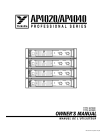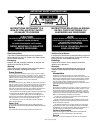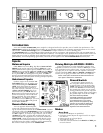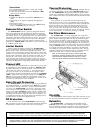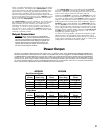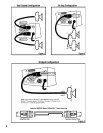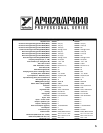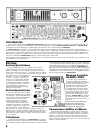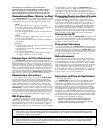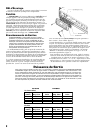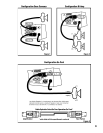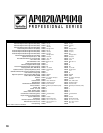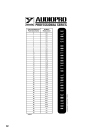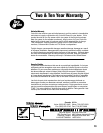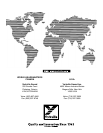
3
which is capable of identifying any deviation from the design
center parameters. The design of the AP4020/4040 is conser-
vative with respect to the power handling capabilities of the
output devices. The topology guarantees that thermal stress
not secondary breakdown will set the limits of operation,
while the computer optimized heat dissipation system insures
that excessive thermal stress will not occur. Yorkville’s reputa-
tion as a manufacturer of reliable equipment will be further
enhanced by the AP4020/4040.
The AP4020/4040 is not only suitable for use in both heavy
duty touring sound reinforcement systems but also when
high headroom and low distortion are needed to fully
reproduce the dynamic range and clarity of today’s CD
recordings. It is built to survive grueling road conditions
and constant 2 ohm (4 ohm in the AP4040) operation. Its
reliability in a fixed installation running 4 or 8 ohm studio
monitors is without parallel.
Output Connections
WARNING: When driven to full power in Bridge Mode.
There is more than 100Vrms appearing between the bind-
ing posts. This represents a significant shock hazard and
due care should be taken when making any speaker con-
nections. Ensure that no strands of bare conductor are
exposed after inserting the speaker wire into the hole in
the side of the binding post terminals.
The AP4020/4040 has 5–way binding posts and Neutrik
four contact Speakon™ connectors for output speaker con-
nections. Connection to the binding posts can either be made
with a banana plug inserted into the end of the post.
There are two Speakon™ connectors. The Speakons™ are con-
nected to the amplifier’s outputs whether the amplifier is in ste-
reo, mono, or bridge modes. Each Speakon™ output connector
(output A and output B) is wired in parallel with it’s respective
binding posts for two channel two cable connections (figure 1).
Speakon™ output A also doubles as the A&B/Bridge connec-
tor. This Speakon™ contains both channels on one connector.
This is convenient when connecting one speaker to the ampli-
fier in bridge mode where the speaker is connected across the
positives of each amplifier output. Configure the mode switch
for bridge and connect the speaker to pins +1 and +2 of the
bridge/bi-amp Speakon (figure 3).
To connect a bi-amp speaker, configure the amplifier for ste-
reo and connect to the bridge/bi-amp connector but use all
four terminals in the Speakon connector which will connect A
and B outputs separately to the speaker (figure 2). Connection
configurations are labeled on the back panel.
AP4020 AP4040
Both Channels Driven
Load 1KHz 1KHz 1KHz 1KHz
(ohms) Cont. Avg. Burst Cont. Avg. Burst
2 ohm Mode 2 ohm Mode 4 ohm Mode 4 ohm Mode
8 4
75 625 750 1200
4 7
50 1200 1200 2175
2 1200 2175 n/a n/a
Bridge Mod
e
Load 1KHz 1KHz 1KHz 1KHz
(ohms) Cont. Avg. Burst Cont. Avg. Burst
2 ohm Mode 2 ohm Mode 4 ohm Mode 4 ohm Mode
8 1
500 2400 2400 4350
4 2
400 4350 n/a n/a
2 n
/a n/a n/a n/a
Power Output
All values are in WATTS. Measurements were made at the 0.1% distortion point. Some CONTINUOUS AVERAGE POWER mea-
surements required line currents greater than 15 Amps. The amplifier under test was plugged into an IDEAL POWER LINE consisting
of a REGULATED 120 VAC RMS 60 Hz pure sine wave. Ordinary AC “wall outlet” lines will always exhibit varying and unpredictable
amounts of sag. To produce objectively verifiable and accurate specifications these unknown factors must be eliminated by using
an ideal AC line. When using an ordinary electrical outlet, it will usually be possible to get 2400 Watts when the AP4020 is bridged
into 4 ohms (AP4040 bridges at 8 ohms). The BURST measurements use a 10mS burst at 1KHz with a 1/8 second pause between
bursts. The 1KHz burst represents the maximum possible sine wave output power.



